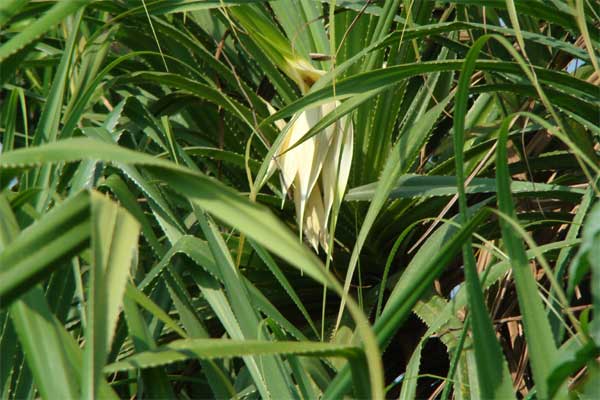July 29, 2025
Nag Panchami is a significant Indian festival celebrated on the fifth day of the Shukla Paksha in the month of Shravana. This year, it falls on July 29, 2025. Devotees in Udupi and Dakshina Kannada worship snake deities offering prayers, flowers like Ketaki, turmeric and milk, seeking protection from snake bites and other harm.
Pandanus, Ketaki, or Screw Pine, is a plant species revered for its fragrance, medicinal properties and cultural significance. Belonging to the family Pandanaceae, is a perennial plant that thrives in coastal areas and tropical climates; they are evergreen shrubs or small trees that can live for many years, producing long, narrow leaves and fragrant flowers.

Physical Description: They are evergreen erect shrubs or small trees producing long, narrow leaves and fragrant flowers. The stalk is crooked, often forked supported by thick aerial roots penetrating into the ground. The leaves grow up to 4-6 meters, are shiny green, and have marginal spikes. Male flower also called Ketaki is white with fragrance, arising from the mid part of the stalk. Female flower identified as Suvarna ketaki is yellow, with less aroma, smaller than male flower. Fruit similar to orange fruit but hard. Aromatic male flowers are used in Aroma Industry.
Ayurvedic Perspective: Pandanus helps to reduce mental and physical tiredness, to stimulate appetite, aid digestion, relieve constipation, helps with palpitations and blood diseases. Roots are used to treat urinary disorders, and the oil is applied topically to alleviate back pain.Pandanus contains an essential oil which balances Tridoshas, especially Kaphapittashamak.
Snakes and Pandanus: Nagarapanchami is observed in rainy season and during this season many snake species breed as the moist environment and abundant food supply create favorable conditions for reproduction. Snakes are often more active during the rainy season, as the wet terrain and vegetation provide ideal conditions for hunting and movement. Also, compared to other seasons, Ketaki (Pandanus fascicularis) blooms more during the rainy season. Increased humidity and rainfall seem to trigger flowering. The similarity in environmental preferences for Ketaki blooming and snake breeding might be one reason why Ketaki flowers are often associated with snakes in cultural and spiritual contexts. It is also observed by environmentalists that snakes keep wandering near Pandanus plants. While snakes don't exactly "smell" plants like Pandanus, they can detect chemical cues emitted by the plant through their chemoreception system. Snakes use their forked tongue to collect chemical particles from their surroundings, which are then analyzed by the Jacobson's organ (a specialized sensory organ) located in the roof of the snake's mouth which helps process chemical signals. Snakes can thus detect pheromones, food scents, or predator scents, helping to navigate their environment. Further research is needed to determine if snakes have a specific response to Pandanus.